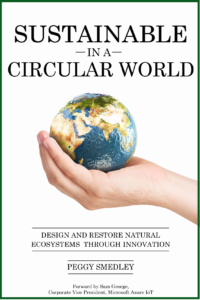The current systems for food production, transportation, and storage involves a lot of waste—including food waste and resource waste. How can technology make a difference in these systems to reduce waste in all its forms? It’s a question worth answering and a problem worth solving, because in the U.S. alone, food waste is estimated by the USDA to be 30-40% of the food supply.
The USDA estimates that a 31% rate of food loss at the retail and consumer levels equals about 133 billion pounds of food, valued at $161 billion. Imagine all the inputs that went into the production, transportation, preparation, storage, and disposal of that discarded food. If governments, industries, and citizens truly want to increase their sustainability, they ought to look no further than cutting down on waste in the agriculture and food supply chain.
Michael Abramov, CEO of Keylabs, Keymakr’s SaaS platform, says the transportation of food across long distances requires significant energy, predominantly derived from fossil fuels, and this contributes to high energy consumption and greenhouse gas emissions. “During transportation, perishable foods are exposed to temperature fluctuations, humidity changes, and physical damage, leading to spoilage and waste,” he says. “This not only exacerbates food scarcity but also contributes to environmental pollution and resource wastage.”
Implementing sustainable technologies in agriculture and food production is essential for mitigating this problem and minimizing waste and energy use. Abramov lists precision agriculture, smart irrigation, waste reduction and resource recovery, and digital technologies and data analytics as categories in which technology is beginning to make a huge difference.
“Remote sensing and aerial imagery […] provide high-resolution data on crop health, soil moisture, and nutrient levels, allowing farmers to identify problem areas and optimize the application of fertilizers, pesticides, and water, thus reducing waste and energy use,” Abramov explains. He also lists drones, autonomous vehicles, and VRT (variable rate technology) systems, which collect and leverage realtime data to reduce waste, within the precision ag umbrella.
Within smart irrigation, Abramov highlights soil moisture sensors, which can reduce not only water waste but also energy consumption associated with irrigation, and weather-based irrigation scheduling, a technology that leverages weather data and crop water requirements to minimize water and energy use.
“Blockchain and traceability solutions […] enable transparency and traceability throughout the food supply chain, reducing food waste by improving inventory management and allowing for better decisionmaking,” he adds. “(And) AI (artificial intelligence) algorithms can analyze vast amounts of data, identifying trends and patterns to optimize resource allocation, waste management, and energy consumption in agriculture and food production.”
The process toward a smarter, more connected food system is already underway, but it will take significant investment and time before these technologies can fully revolutionize the industry. In the future, with the help of technology, hopefully the percentage of food wasted will be much lower than the current 30-40%.
Want to tweet about this article? Use hashtags #IoT #sustainability #AI #5G #cloud #edge #digitaltransformation #machinelearning #climatechange #agriculture #precisionag #smartag #farming #fieldtofork #supplychain #food #foodwaste #energy #resourcemanagement #Keymakr #blockchain


